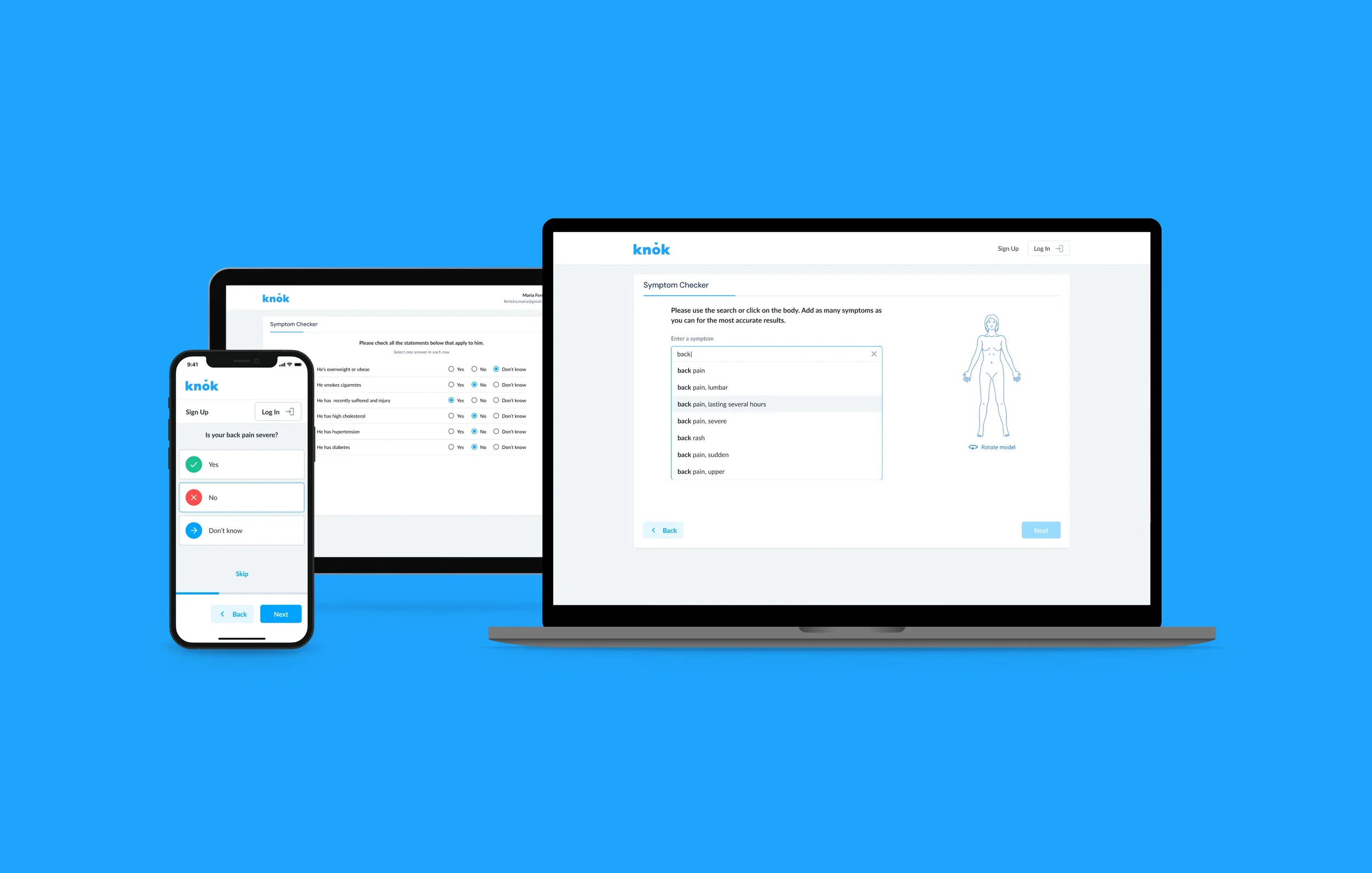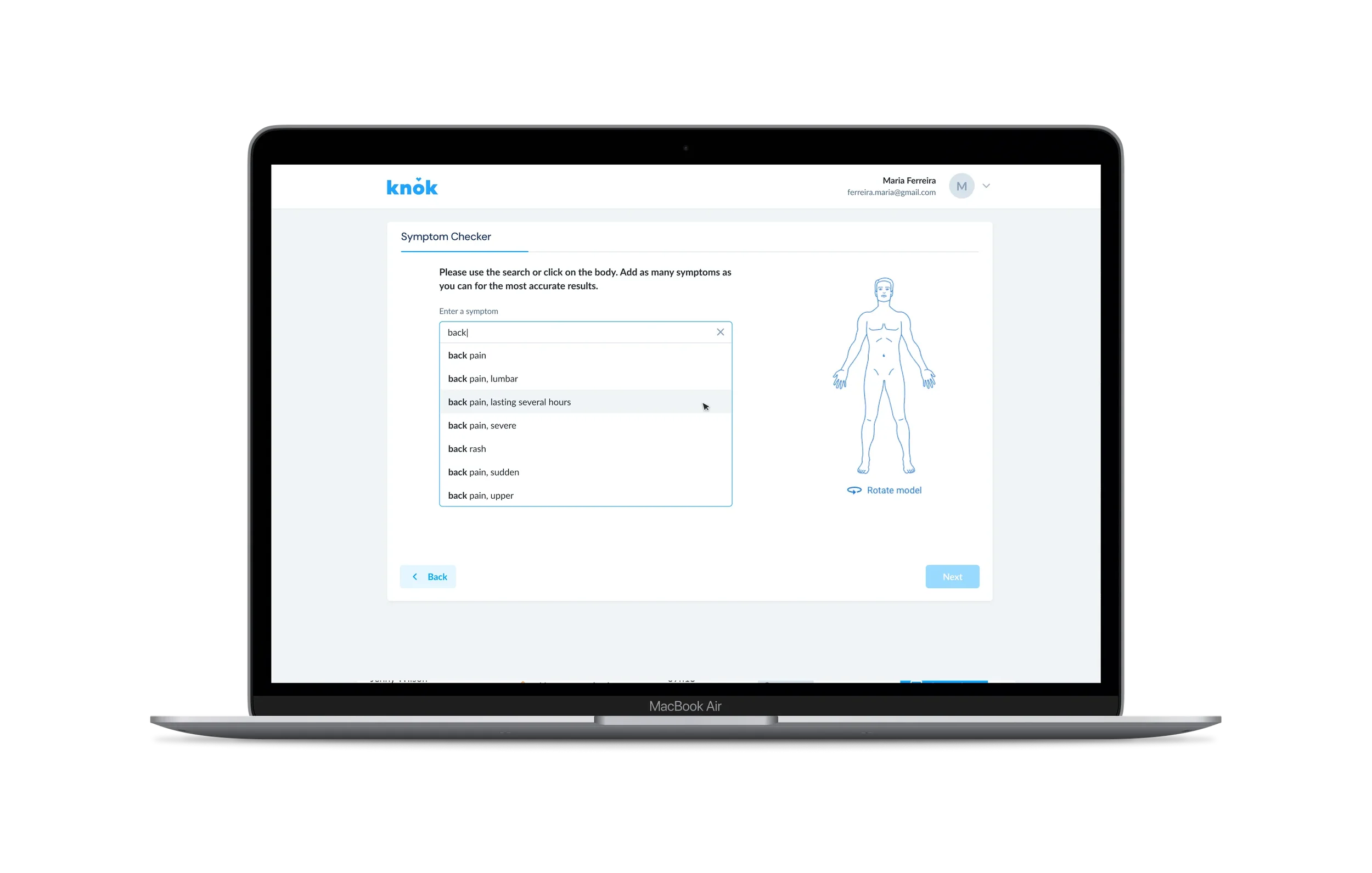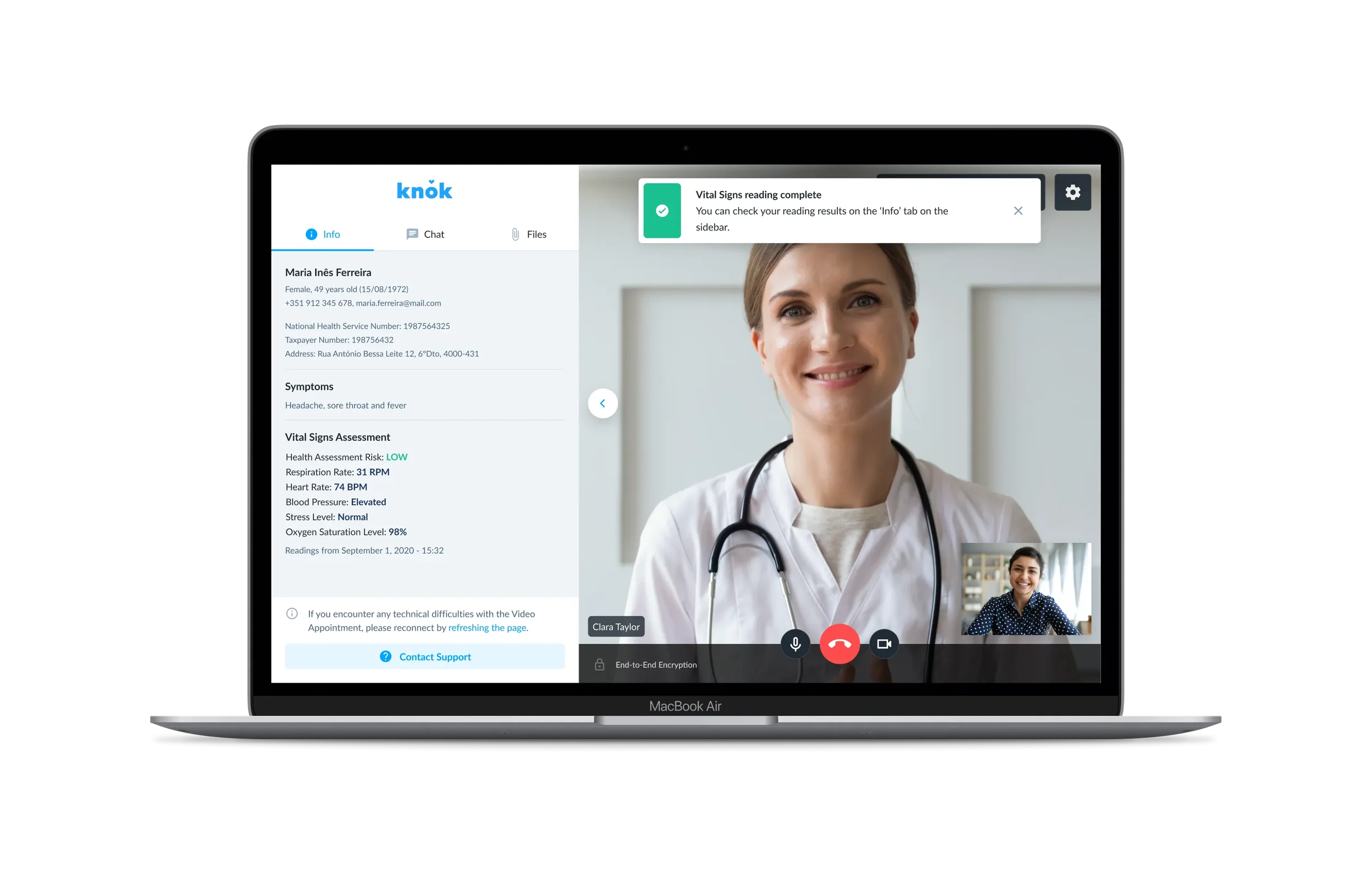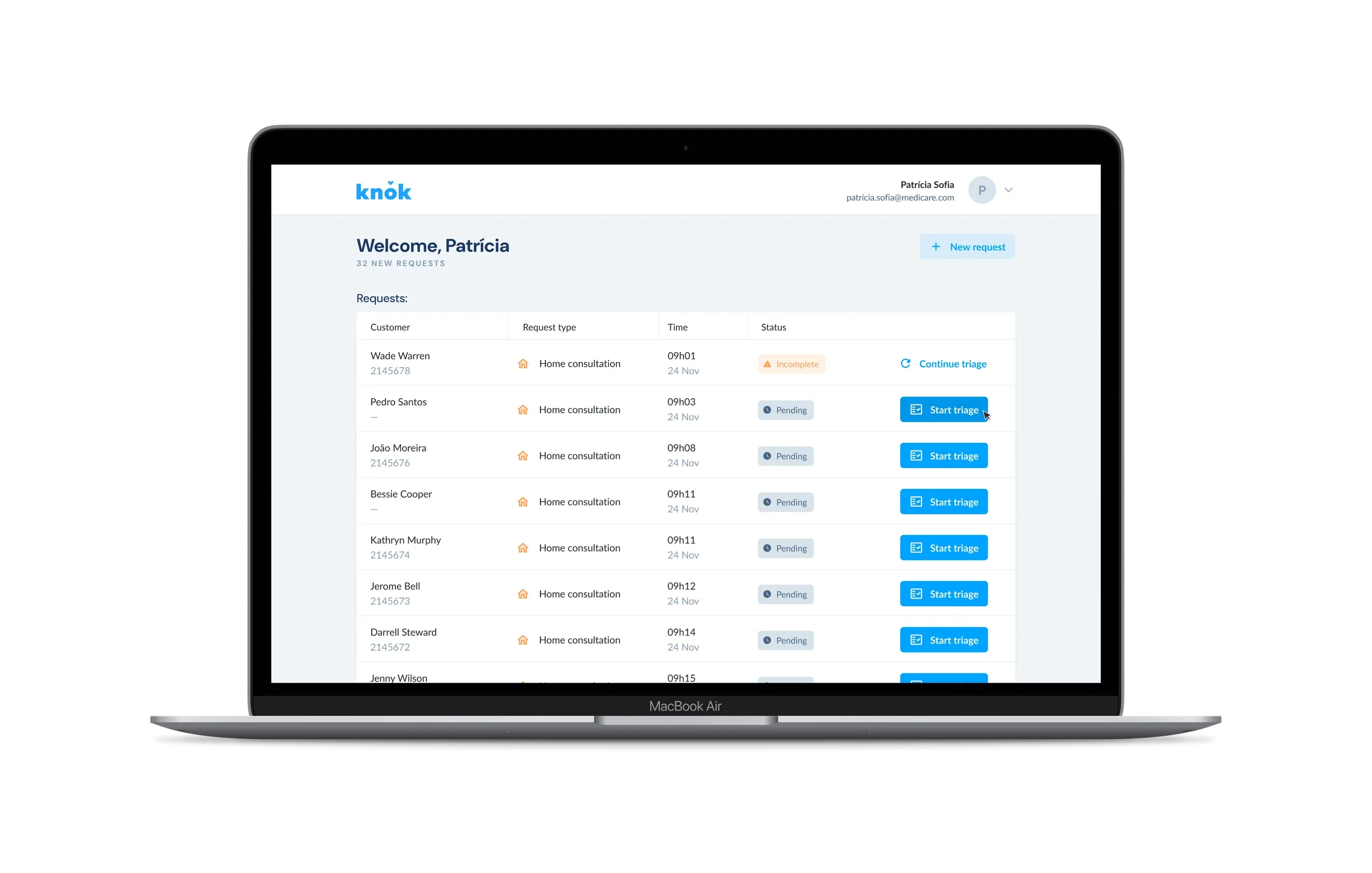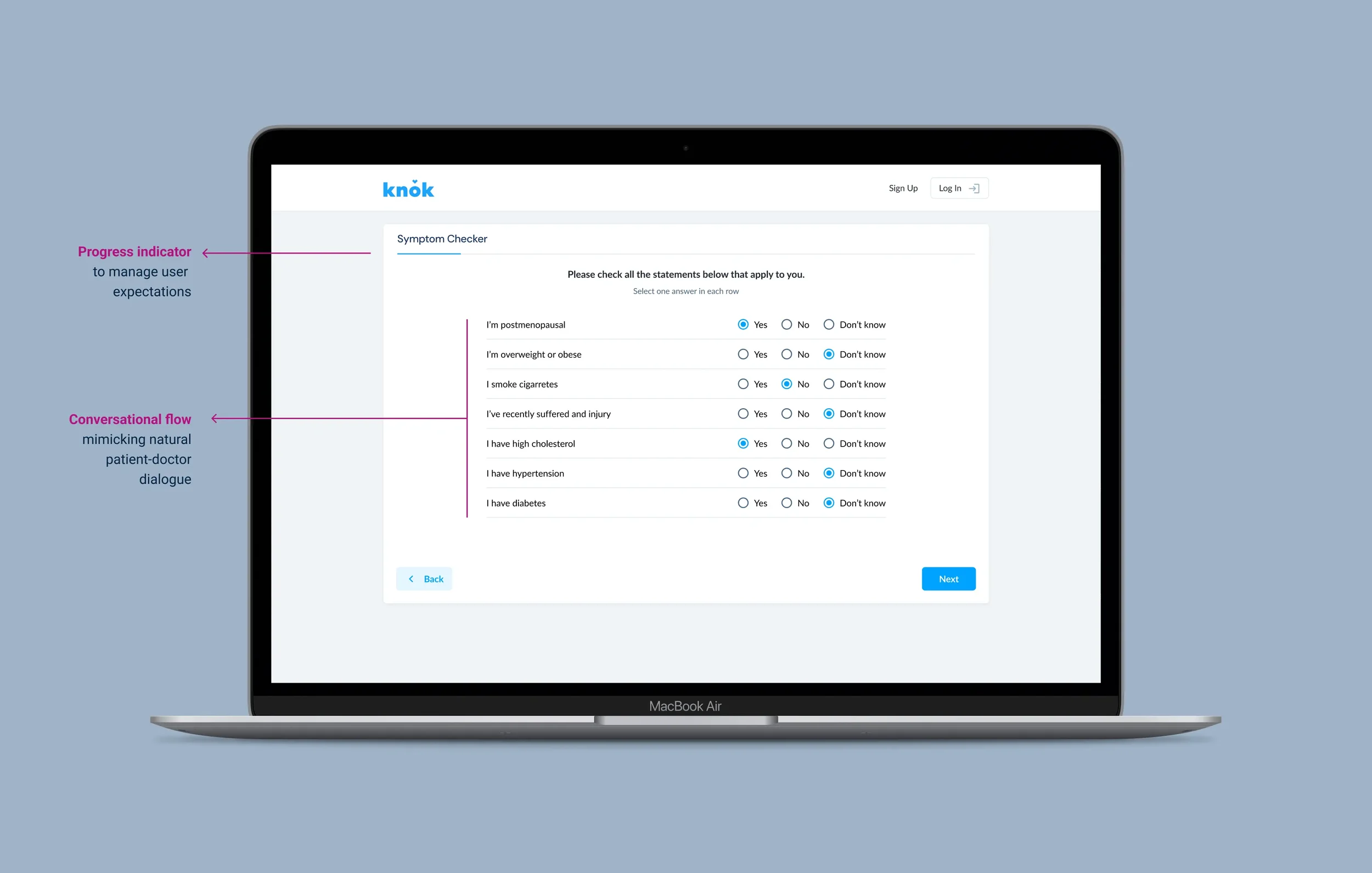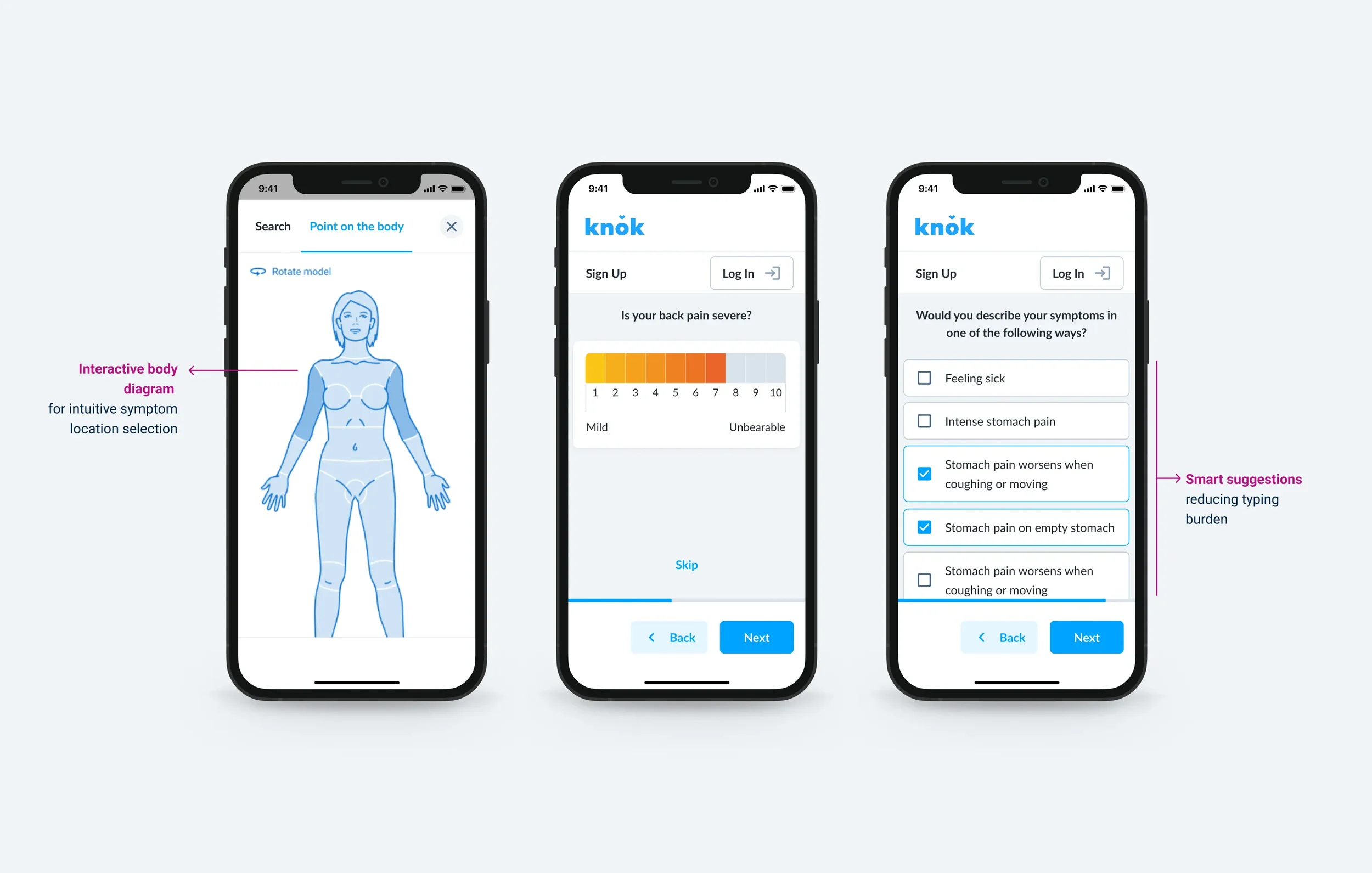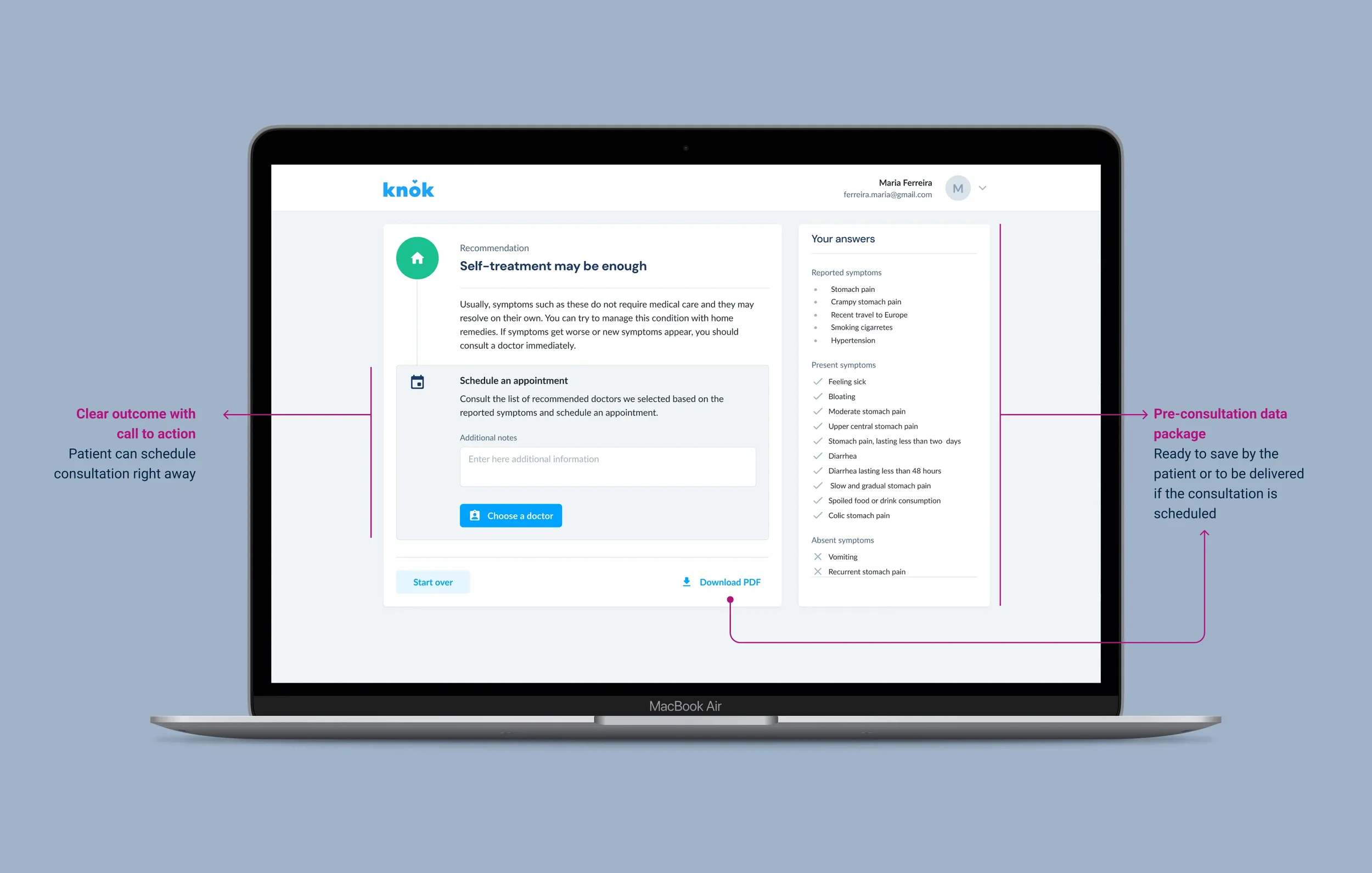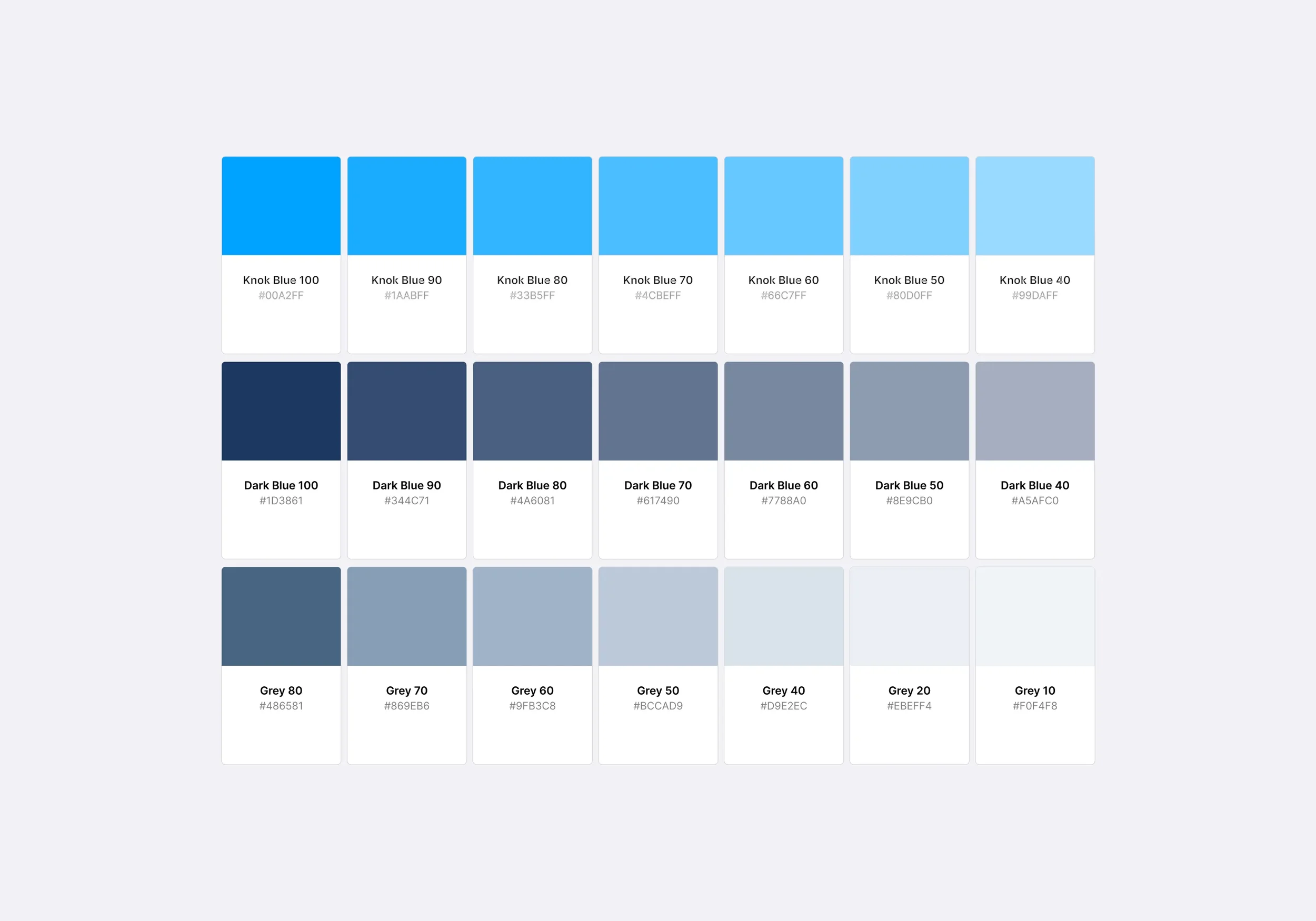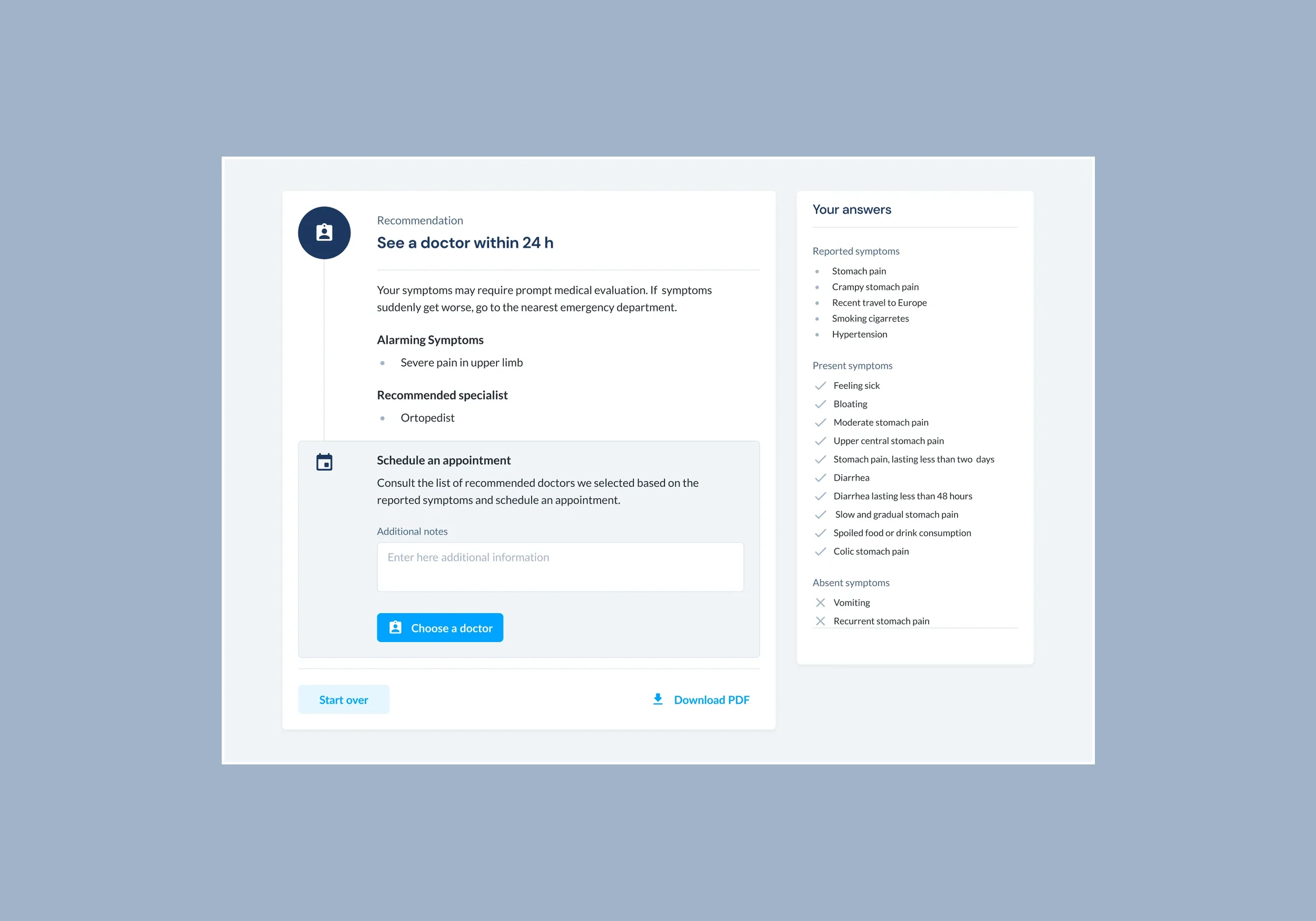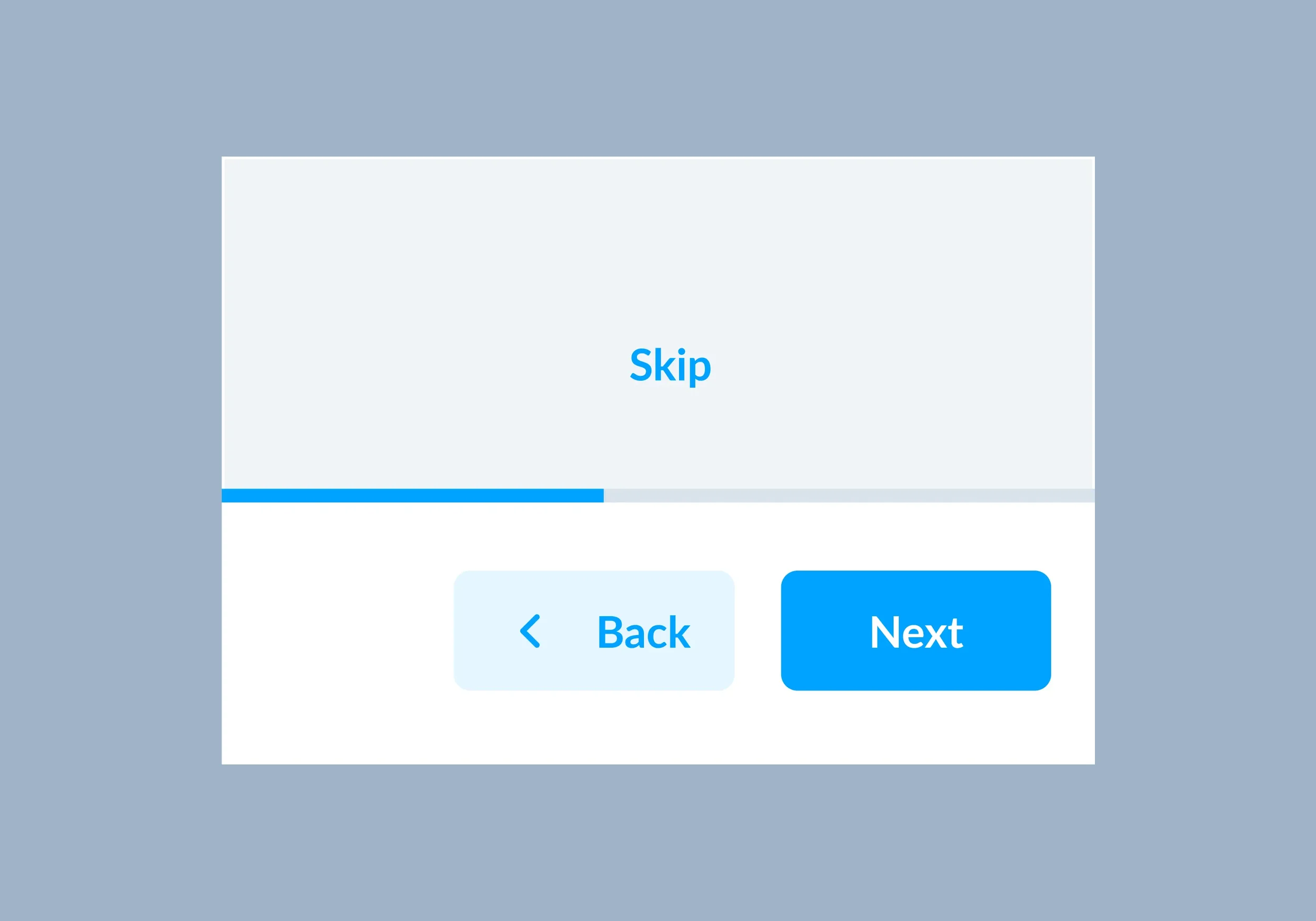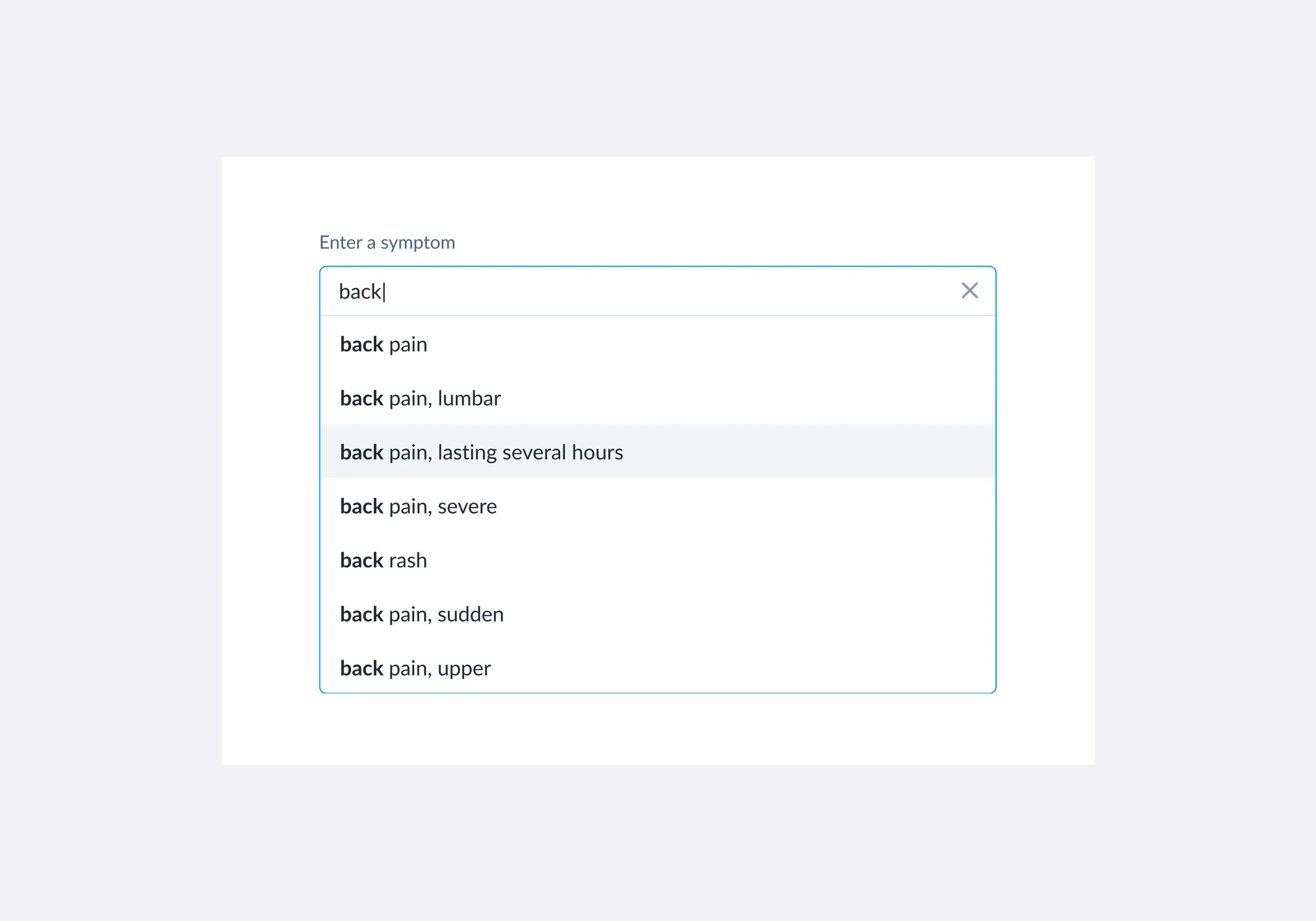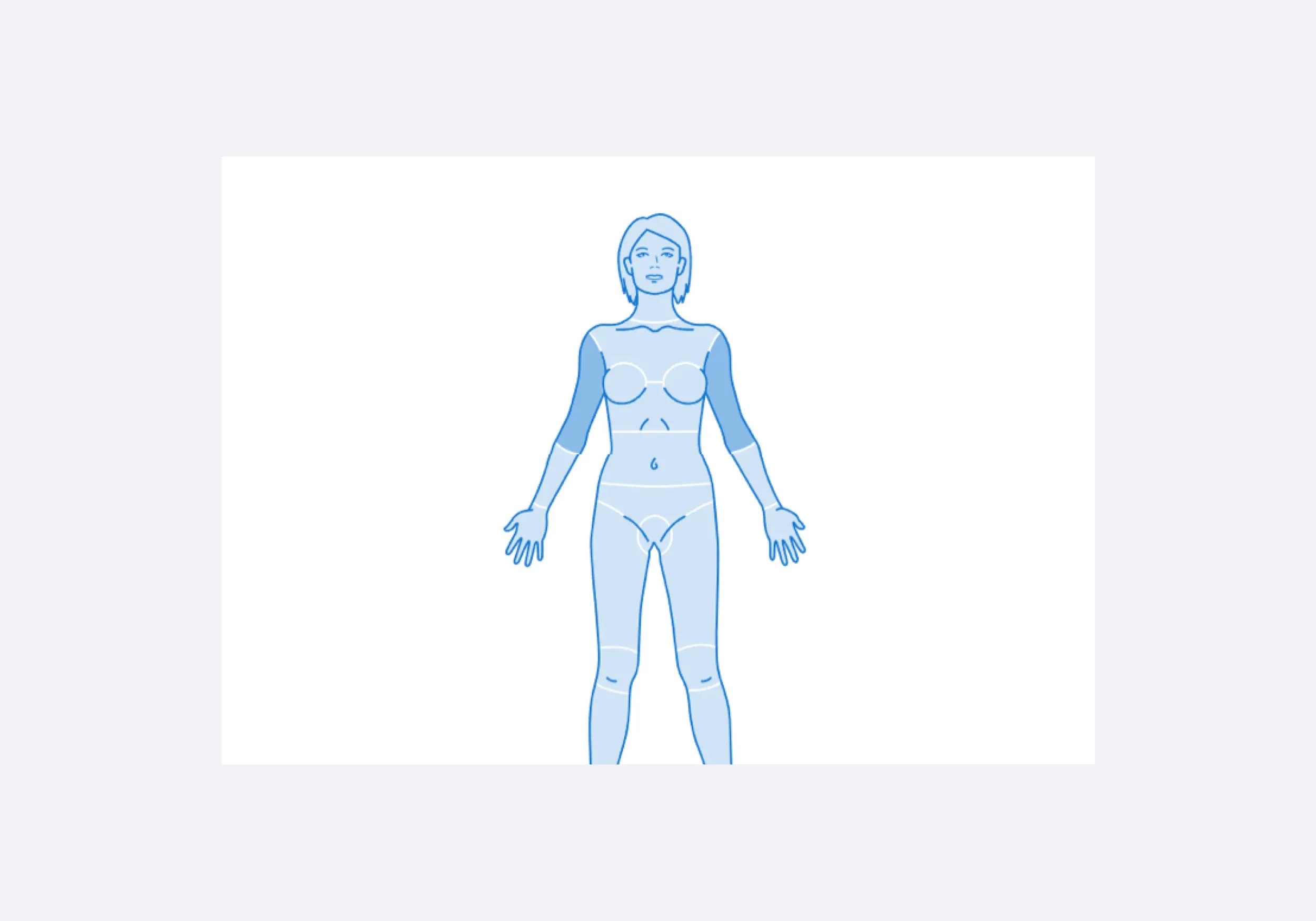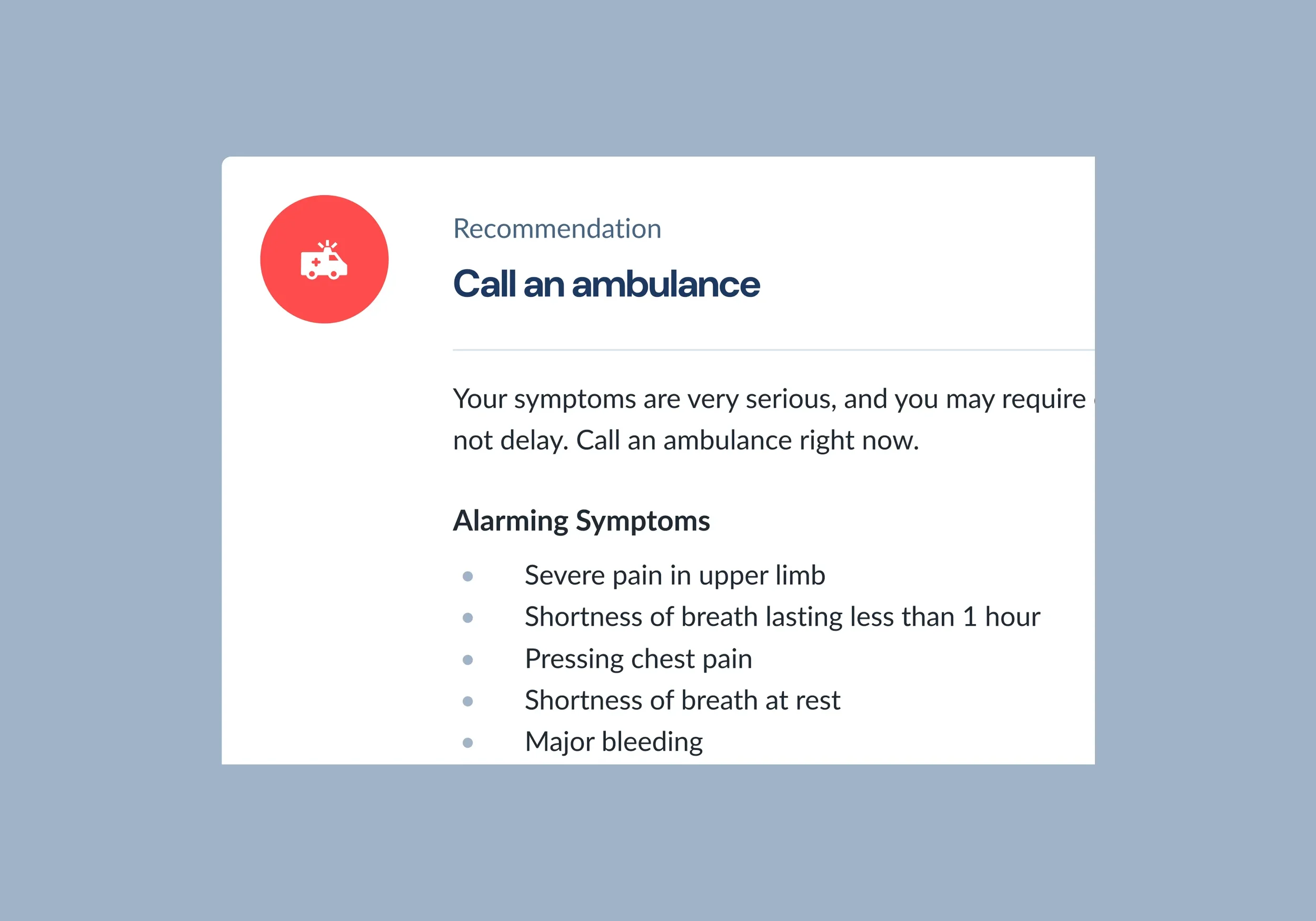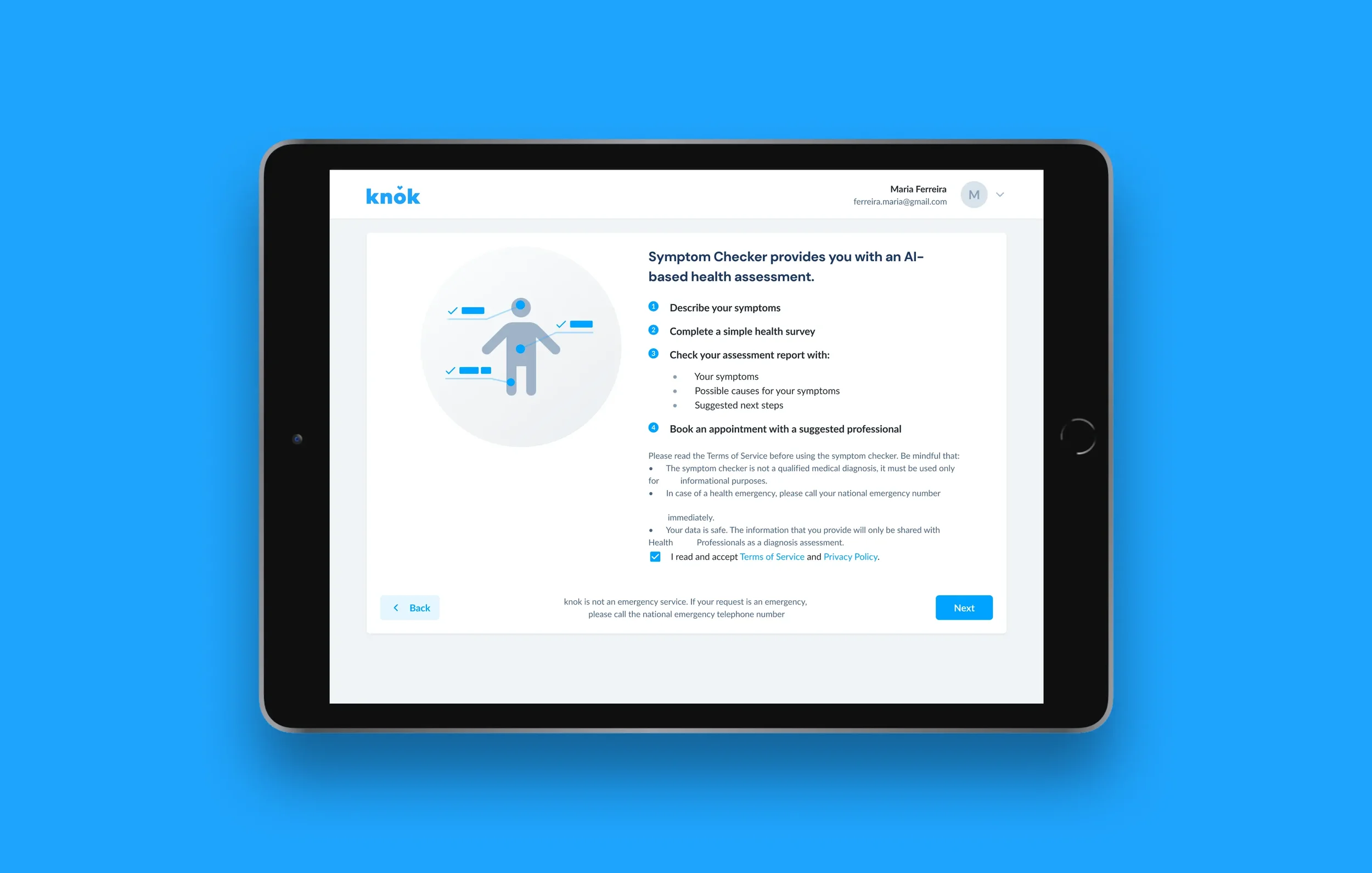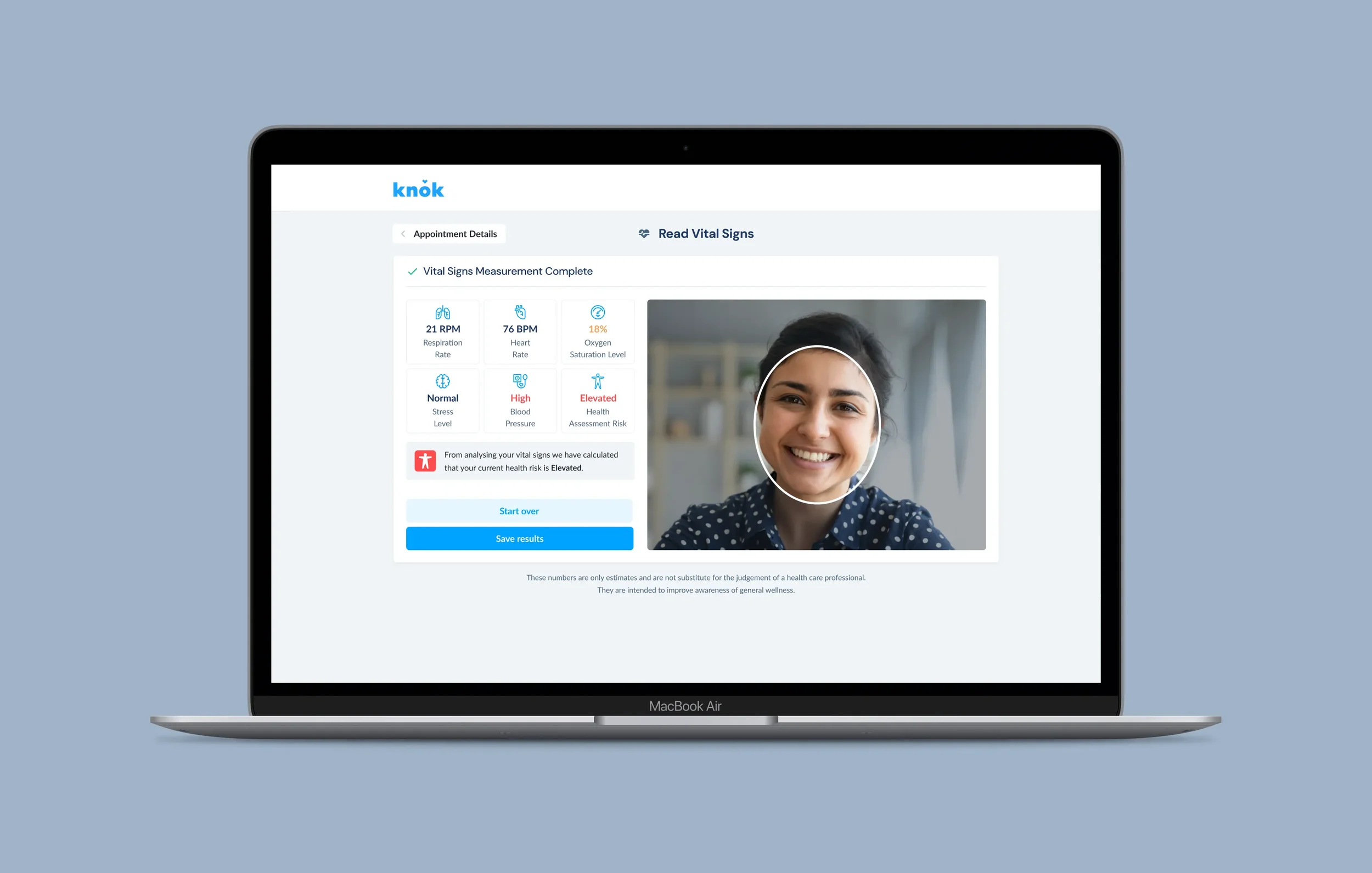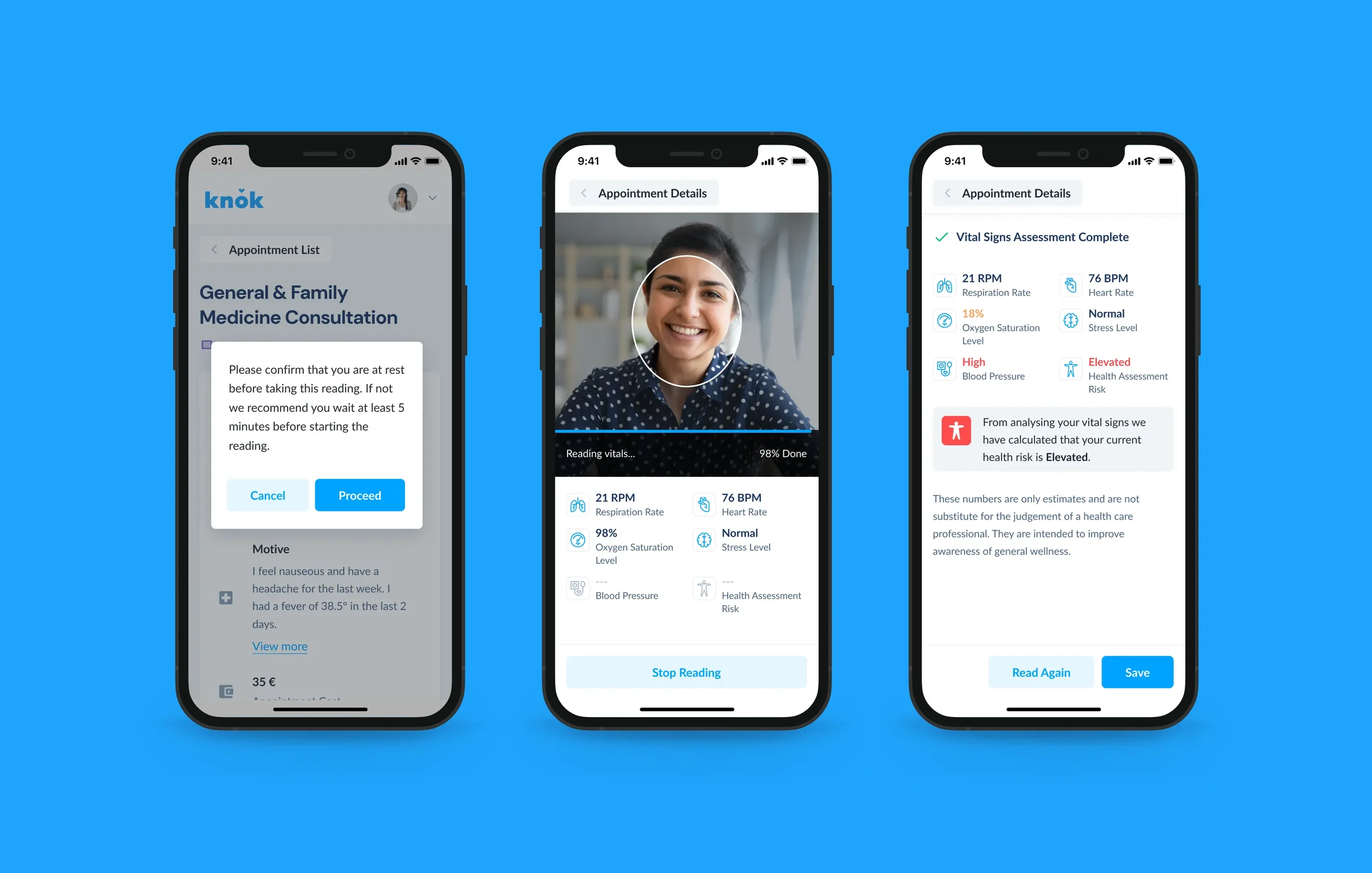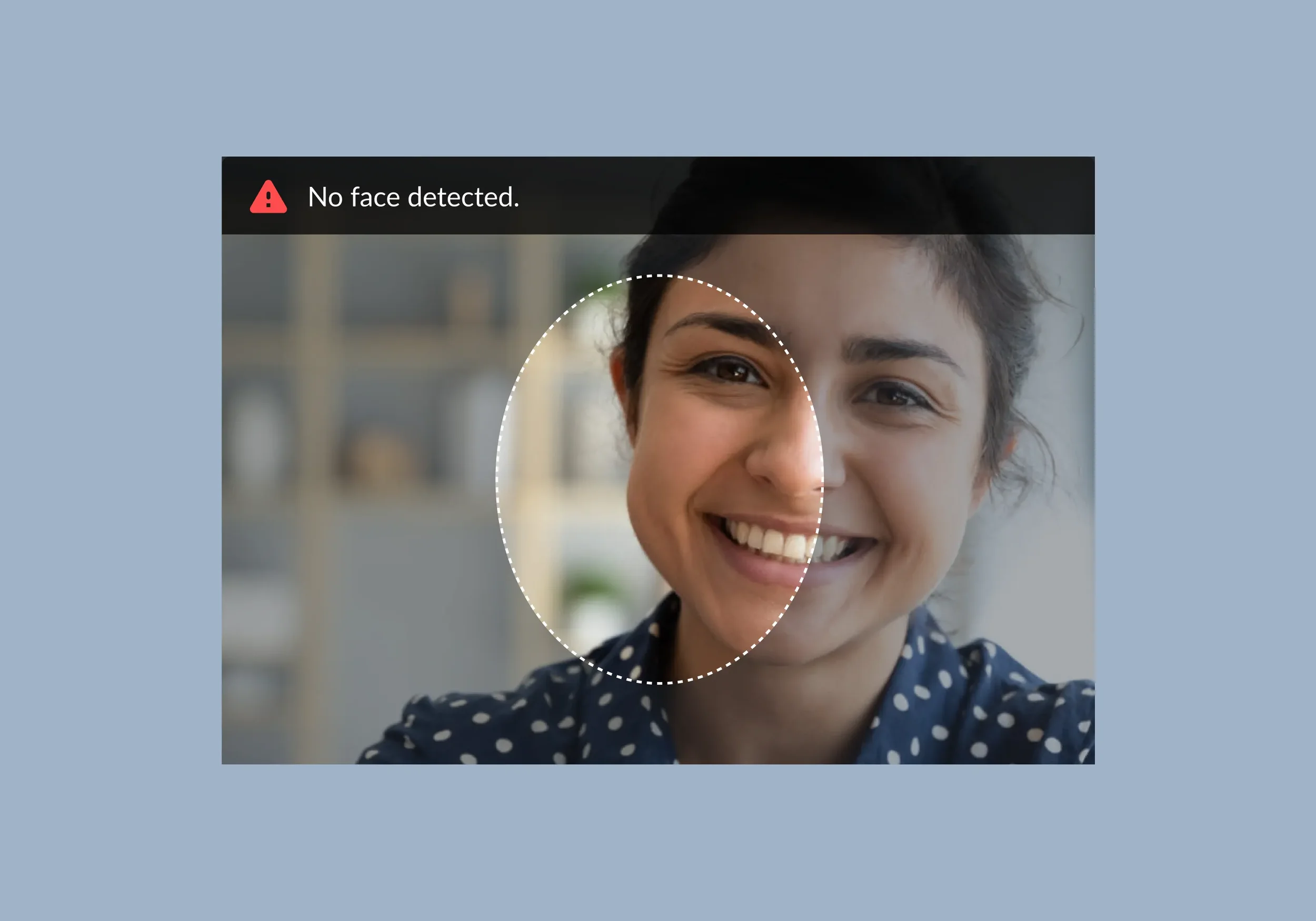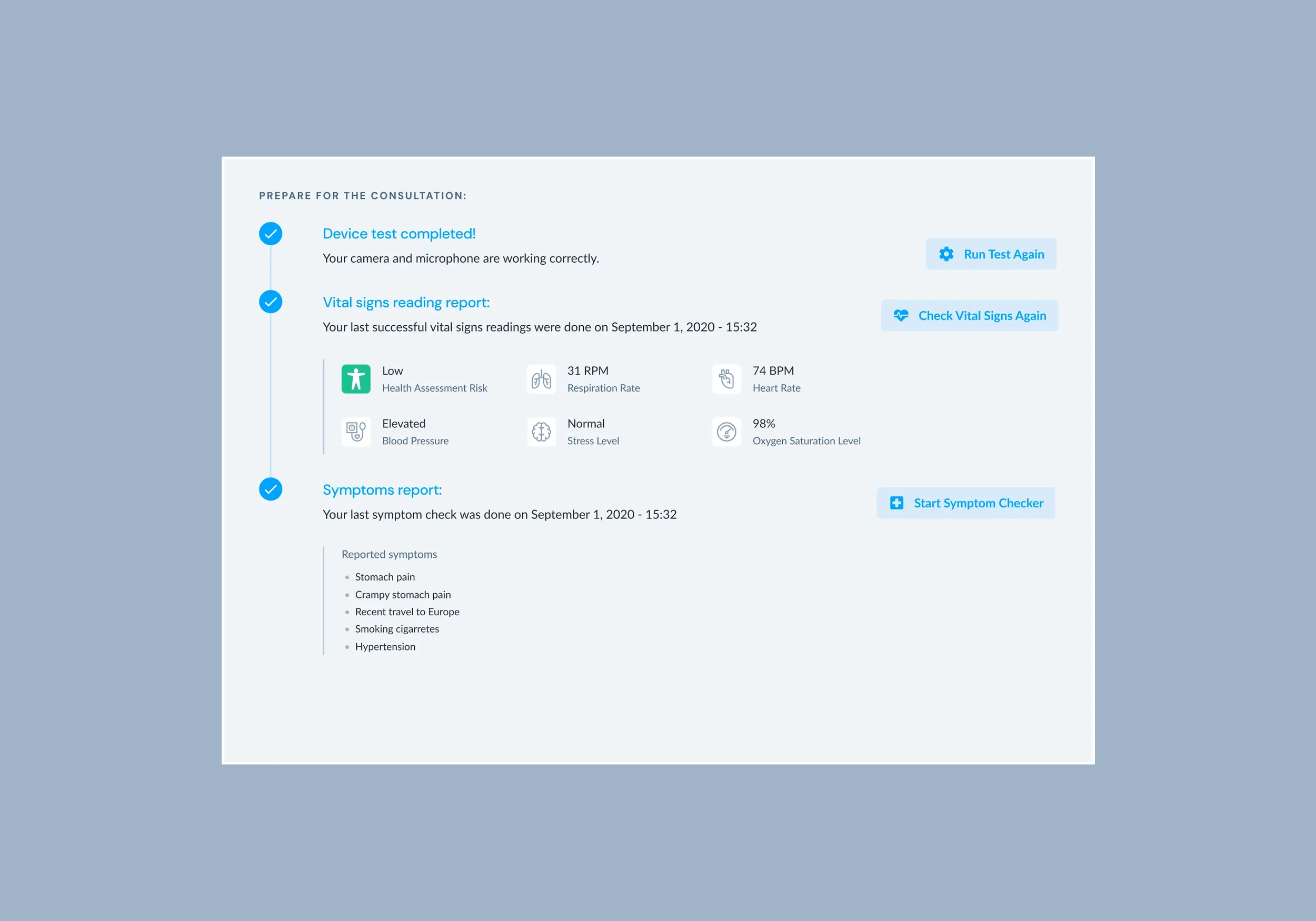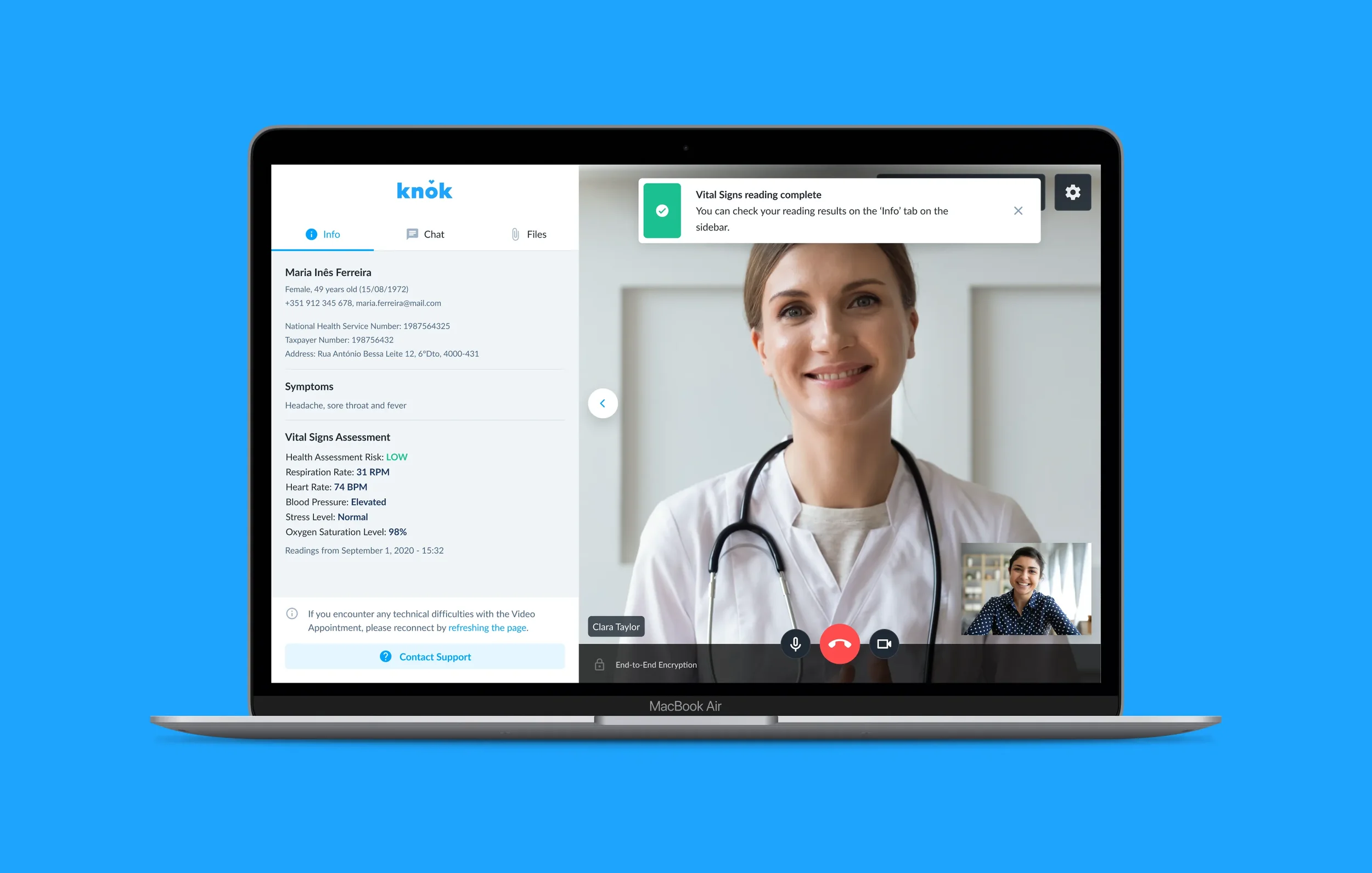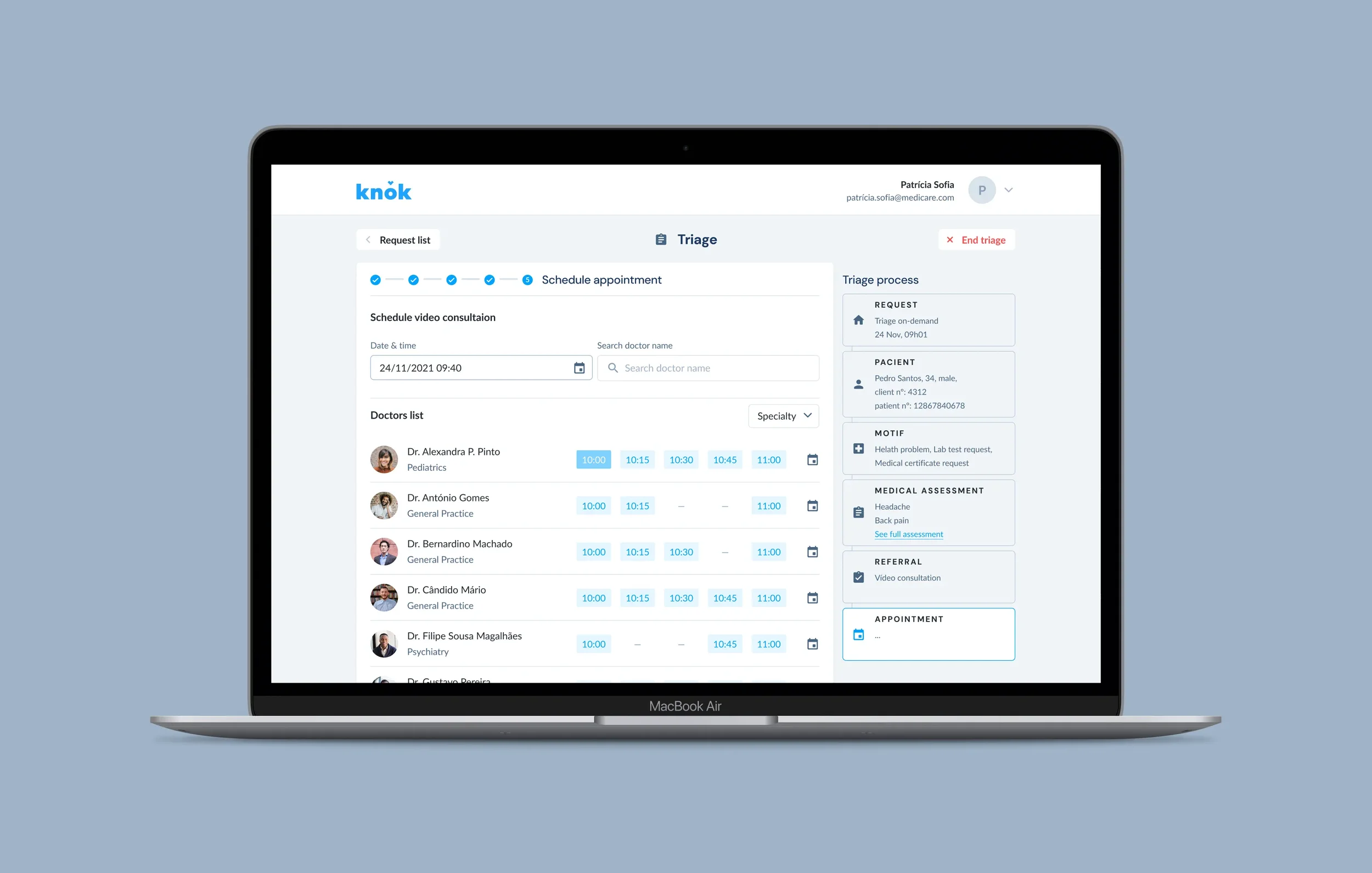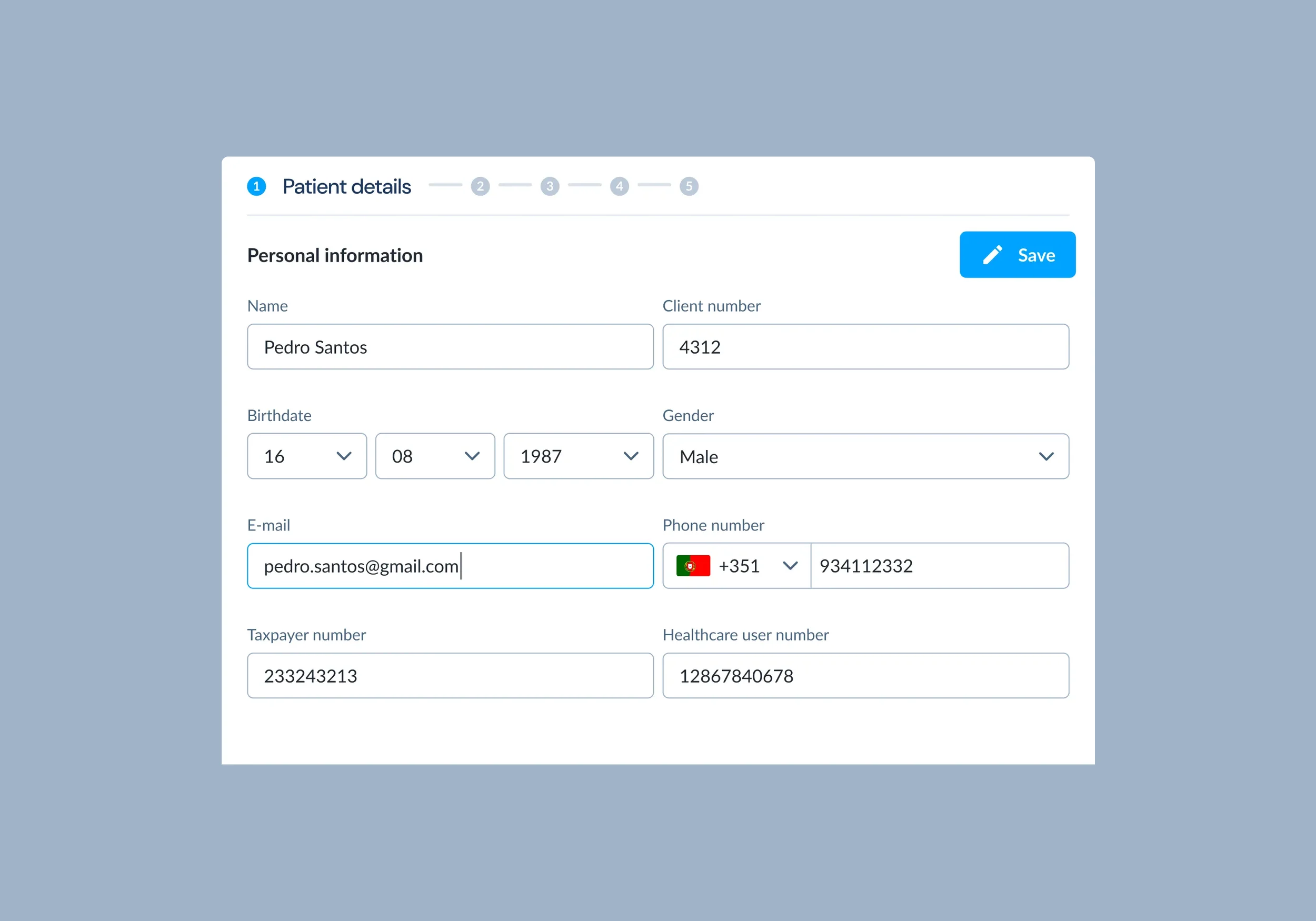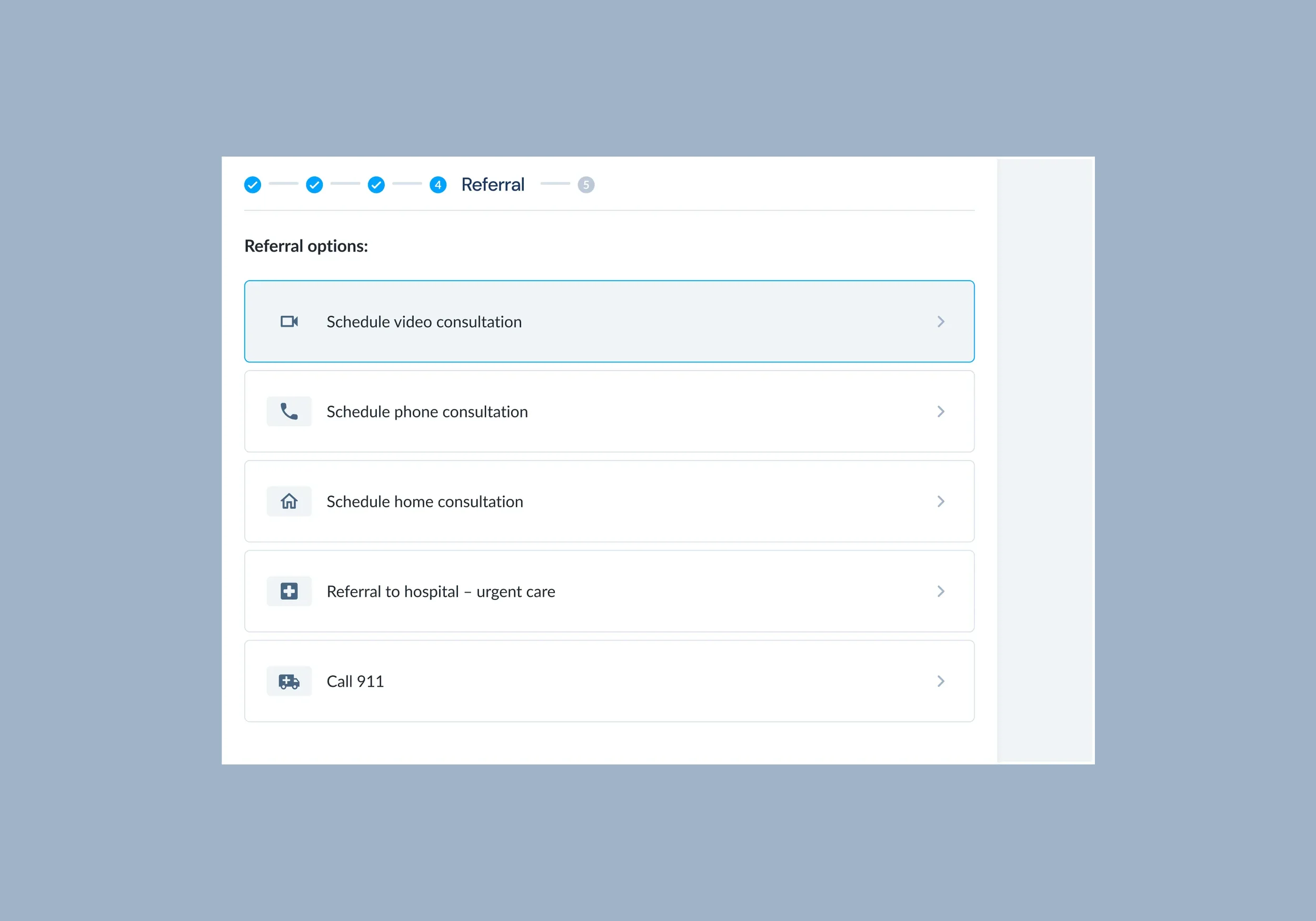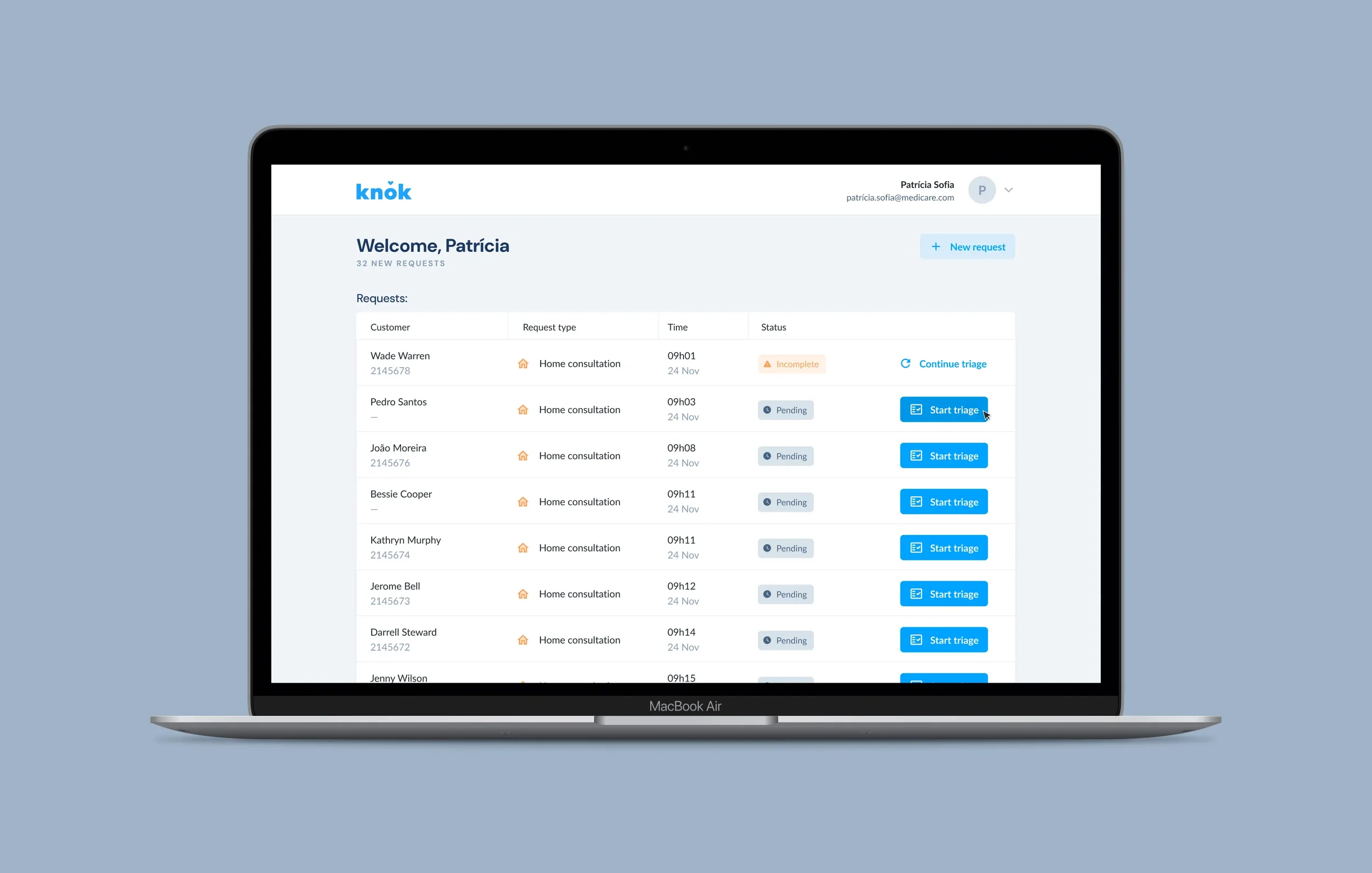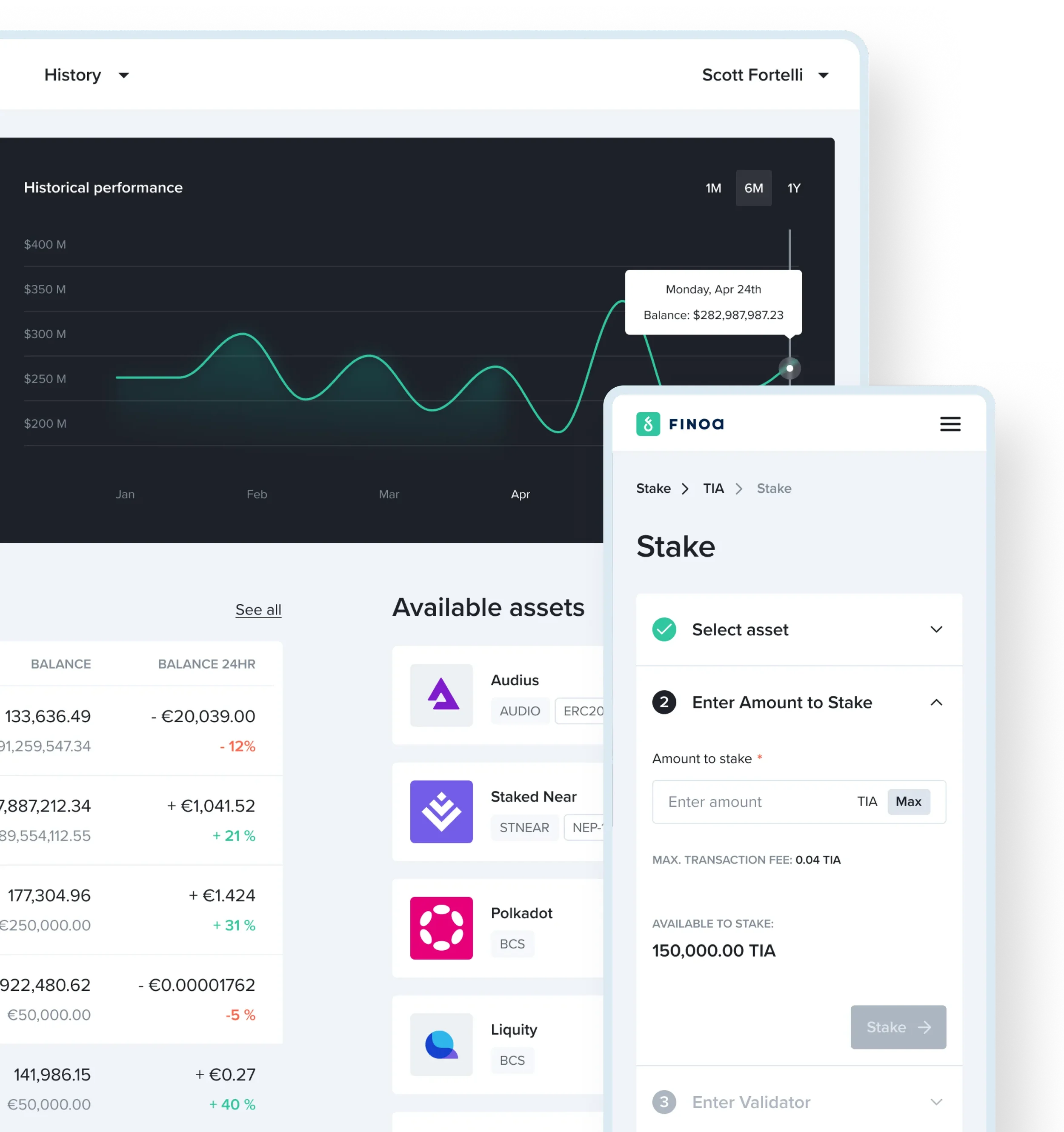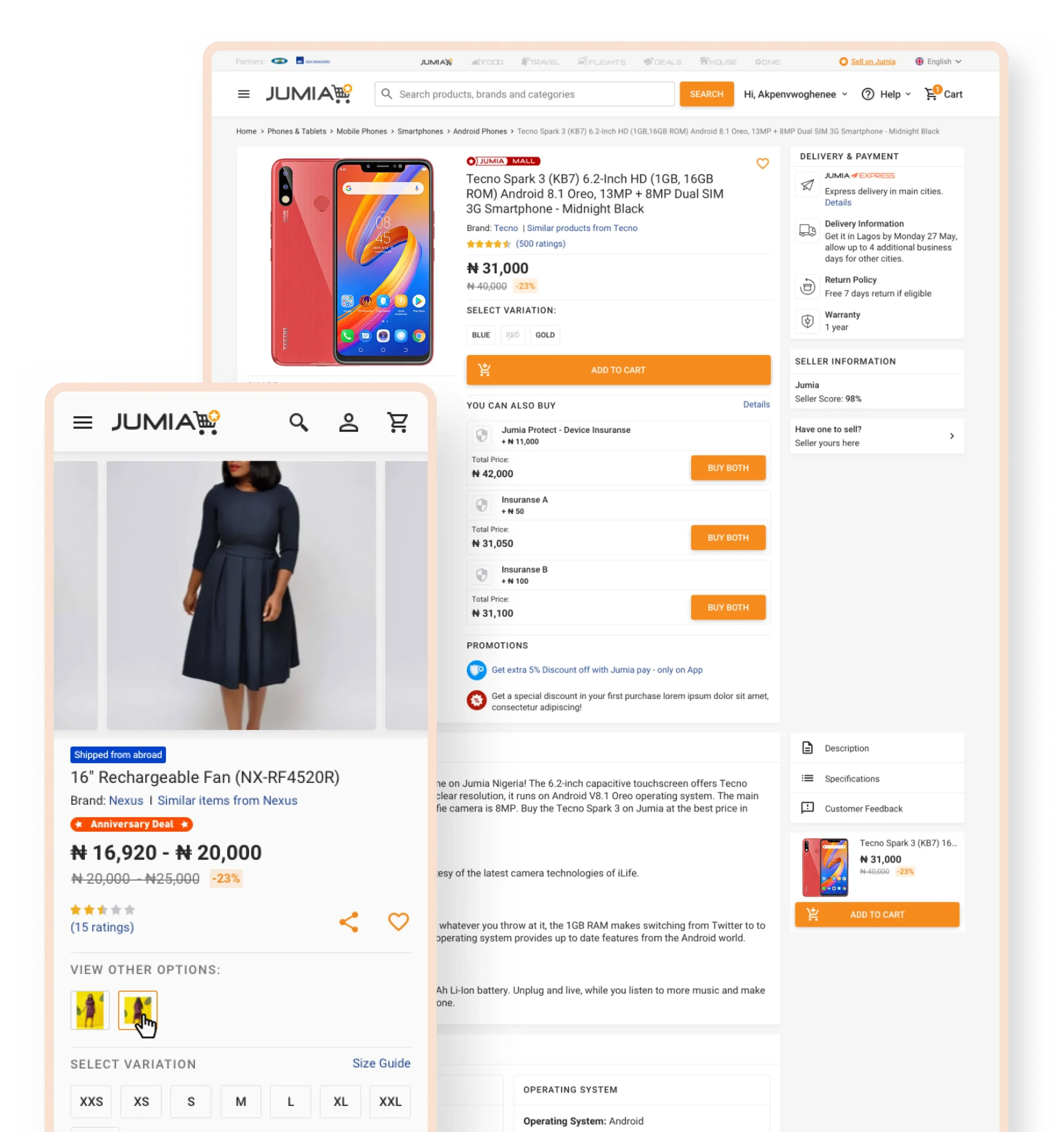Designing the future of care
At Knok, I designed core telemedicine tools, including an AI-powered Symptom Checker, a Remote Vital Signs Reader, and a Nurses Triage Platform. These solutions improved patient guidance, enhanced clinical support, and strengthened the telemedicine experience, contributing to the platform’s growth to over 1.2 million patients.
COMPANY / YEAR
Knok 2021
INDUSTRY
Healthcare, Telemedicine
TIMELINE
12 months
AI-Powered Symptom Checker
AI-powered platform that allows patients to ask health questions and directs people to suitable help.
Remote Vital Signs Reader
A system that remotely reads the body's most basic functions such as heart rate, heart rate variability, respiratory rate and stress level.
Nurses Triage Platform
A triage system that supports nurses during patient calls, guiding decisions while keeping care personal and human-centered.
AI-Powered Symptom Checker
Problem statement
The COVID-19 pandemic left hospitals and clinics under unprecedented strain, as patients with low-priority symptoms struggled to get seen by a doctor. It was difficult for patients to tell what was truly an emergency, leading to some going to the ER unnecessarily. Virtual consultations could provide a more appropriate alternative, but doctors lacked reliable pre-consultation data to speed up workflows and accelerate treatment.
Solution
HOW IT WORKS
An intelligent symptom interview, powered by a conversational AI interface, adapts its questions dynamically based on patient responses to capture accurate health information. This feeds into a risk assessment engine that evaluates urgency levels and supports effective triage. From there, care pathway navigation automatically directs patients to the most appropriate level of care, whether self-care, telemedicine, or in-person consultation. Finally, a pre-consultation data package compiles the gathered insights into a comprehensive summary, equipping healthcare providers with the information needed to deliver timely and focused treatment.
TECHNICAL INTEGRATION
Knok integrated Infermedica’s clinical AI engine into its digital platform to enhance symptom analysis and patient triage. The solution ensured GDPR and HIPAA-compliant handling of sensitive health data, addressing both European and international regulatory requirements. Leveraging the API-first architecture, Knok implemented the system as a white-label solution, embedding the AI seamlessly into its existing workflows. As a result, patients received accurate guidance in their native language, while clinicians benefited from structured, pre-consultation data that streamlined care delivery.
KEY DESIGN ELEMENTS
Calming color palette to create a relaxing experience.
Clear visual hierarchy separating user input and AI responses.
Progress indicators to manage user expectations during assessment.
Smart suggestions reducing typing burden.
Interactive body diagram for intuitive symptom location selection.
Emergency escape routes for critical symptoms.
Outcome
The AI-Powered Symptom Checker demonstrated high accuracy in symptom assessment, aligning closely with physician evaluations and supporting more reliable patient guidance. By reducing unnecessary emergency room visits, it helps ease the burden on healthcare systems while directing patients to more appropriate levels of care. Healthcare providers benefit from significantly faster pre-consultation preparation, as the solution collects comprehensive data points during each patient interaction. From a user experience perspective, the platform achieves strong satisfaction ratings, with patients consistently completing assessments and being guided toward the right care pathways. This not only enhances patient confidence but also streamlines provider workflows, enabling more focused and efficient consultations.
Reflections
Designing conversational flows that mimicked natural doctor-patient dialogue and integrating visual tools like interactive body mapping were crucial to reducing user anxiety and encouraging completion. Collaborating closely with engineers and clinical experts, I learned the importance of aligning design decisions with both regulatory standards and patient expectations. This project reinforced my belief that thoughtful design can transform intimidating healthcare processes into empowering digital experiences.
Remote Vital Signs Reader
Problem statement
Traditional vital signs monitoring require physical medical equipment, limiting remote healthcare capabilities. Healthcare providers needed accurate, non-contact methods to assess patient vital signs during video consultations, especially crucial during the pandemic when physical contact was minimized.
CLINICAL REQUIREMENTS
Heart rate monitoring accuracy within ±3 BPM (Beats per minute).
Respiratory rate detection within ±2 breaths per minute.
Blood oxygen saturation estimation capabilities.
Real-time processing during video consultations.
TECHNOLOGY CONSTRAINTS
Browser-based solution requiring no additional hardware.
Variable lighting conditions and camera quality.
Patient movement and positioning variations.
Privacy concerns with biometric data collection.
Solution
HOW IT WORKS
We built a tech system that combined multiple advanced components to ensure reliable, immediate health information. Essentially, a computer vision engine leverages AI-powered facial recognition to detect heartbeat through face scans, without any gadget touching the patient’s skin. This engine is complemented by sophisticated signal processing algorithms that filter noise and movement blur, so readings remain clear and precise even in dynamic environments. Thanks to real-time analytics that translate these signals, doctors are able to track patient health indicators instantly while speaking with them, giving them immediate and actionable insights. All output results go through strict checks of data validation protocols designed to meet medical-grade accuracy standards.
KEY FEATURES
Non-contact vital signs measurement.
Real-time heart rate and respiratory rate detection.
Integration with video consultation platform.
Automated data logging and trend analysis.
KEY DESIGN ELEMENTS
The interface prioritizes usability and trust, minimizing cognitive load through automated operation and clear visual guidance for accurate measurements. A clean, clinical aesthetic reinforces credibility, while smart error handling ensures reliable performance in any condition.
An Augmented Reality overlay provides intuitive face-position guidance with real-time feedback on lighting and distance. A live vital signs dashboard integrates seamlessly into the consultation view, with one-click data export for smooth connection to medical records.
Clear visual feedback guides users to achieve optimal positioning and ensures high-quality measurements.
Pre-consultation patient package integrated with medical records.
Outcome
The vital signs monitoring system transformed remote healthcare consultations by the use of a regular camera. It provides accurate measurement of heart rate, respiratory rate, and blood oxygen saturation to doctors, giving them access to real-time health stats. This allows doctors to track changes over time and also save info in existing records. The patients benefited from an intuitive interface that delivers an automated operation with low cognitive load, allowing secure, quick remote check-ups, while reducing in-person visits. By combining clinical-grade accuracy with a user-friendly experience, the solution presents:
Enhanced diagnostic capabilities for remote consultations.
Real health data to help doctors choose treatments.
Prolonged health monitoring capabilities.
Reflections
This project showed the impact of thoughtful design in empowering doctors to diagnose more effectively, during remote consultations. It displays health information simply, for both patient and doctor, allowing both to monitor health changes over time. Designing with precise data and clinical accuracy, yet in a clear and intuitive way, fosters trust and confidence in every user.
Nurses Triage Platform
Problem statement
With hospitals facing critical nursing shortages and patients volume increase, nurses required clever assistance to sort through incoming cases, decide who needed attention first, handle tricky procedures, yet still provide good, safe treatment. Observing how nurses worked showed:
a significant portion of nursing time was consumed by documentation and administrative tasks, leaving limited capacity for direct patient care.
manual triage processes caused delays in critical care and led to inconsistent decisions across staff.
nurses faced challenges accessing comprehensive patient data and tracking status changes throughout shifts.
integration with existing Electronic Health Records (EHR) was essential.
Solution
Nurses use this platform to handle patients via a clear, five-stage process, gathering patient details, the reason for calling, and clinical assessments. Depending on what nurses find during the call, the system helps them connect patients with video or phone consultations, or directs them toward immediate care. When setting up video calls, nurses can access the available doctors list and their schedules, allowing them to book appointments directly.
KEY FEATURES
A simple, five-step process for patient registration and a quick health evaluation.
Clinical assessment offering space to elaborate and take notes.
Referral options to video, phone, or urgent care consultations.
Integrated doctor calendar and scheduling system.
KEY DESIGN ELEMENTS
Built for ease, the Triage Platform helps nurses to maximize workflow efficiency. The multi-step layout reduces cognitive load, guiding nurses through complex tasks one clear stage at a time. Colors and consistent brand identity reinforce trust and build confidence, while real-time visual cues and intuitive navigation ensure smooth interaction even when things get hectic.
Five-step flow with quick input fields.
Multiple integrated referral options.
Outcome
This platform helps nurses sort patients quicker and ensures patients get seen based on need. As a result, nurses handle less paperwork, transfer information seamlessly, dedicating themselves to what matters: people. Hospitals see happier patients, shorter hospital stays and cost savings. The triage platform provides reliable, real-time support that empowered nurses to deliver safer and more efficient care.
Reflections
This project showed how vital it is to build tools supporting - not overshadowing - a clinician’s skill. Combining advanced clinical decision-making with user-centered interface design, the platform enabled nurses to better triage patients. This experience highlighted the critical balance between technology, workflow integration, and human factors within demanding medical environments.
View other projects
FINOA
Simplifying crypto to drive growth
JUMIA
